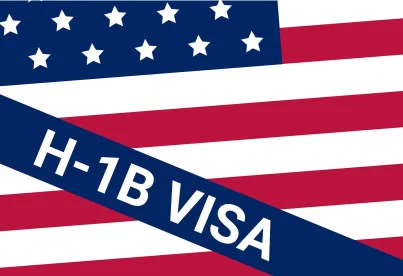The H-1B cap season for Fiscal Year 2024 is fast approaching. USCIS announced on January 27th that cap registration begins on March 1st. Employers should assess their hiring needs and determine if they will sponsor foreign workers for H-1B classification this year. Now is the time to begin preparing.
The H-1B visa category is for foreign workers who will perform services in a specialty occupation. Essentially, a specialty occupation is one that requires at least a bachelor’s degree in a field relevant to the job offered. Examples of H-1B occupations include fields in architecture, science, engineering, medicine and health, accounting, and law.
In addition, the foreign worker must possess the requisite education credentials for the specialty occupation. H-1B beneficiaries may include both recent foreign student graduates present in the United States in F-1 student status and any other foreign professional whether currently in the United States or abroad.
There is a statutory cap of 65,000 H-1B visas (regular cap), with an additional 20,000 visas for foreign professionals with an advanced degree from a U.S. academic institution (master’s cap). In recent years, the demand for H-1B visas has far exceeded the number of visas available in the annual quota:
- In Fiscal Year 2021, USCIS received 274,237 H-1B registrations
- In Fiscal Year 2022, USCIS received 308,613 H-1B registrations
- In Fiscal Year 2023, USCIS received 483,927 H-1B registrations
In 2020, USCIS implemented an electronic registration system for the H-1B cap to manage the increasing demand for H-1B visas. The electronic registration system alleviates the burden of preparing and filing a full H-1B petition before knowing if a visa is available in the quota. Rather than file a full H-1B petition, employers electronically register foreign workers in the H-1B cap by providing basic information and paying a registration fee. While registration requires only basic information, the employer should know in advance if the case, if selected, would be approvable. In other words, whether the employee and the position meet the specialty occupation and wage requirements for H-1B classification. In the past couple of years, the registration period was open for at least 14 days during the month of March.
If USCIS receives more registrations than there are H-1B visa numbers available, USCIS conducts a random lottery to select the registrants who may be the beneficiary of an H-1B petition. Those selected are notified and provided instructions on where and when to file the H-1B petition. The employer then may file an H-1B petition for each selected worker. The earliest possible date to request H-1B status in the petition is October 1, 2023, which is the start of federal Fiscal Year 2024.
USCIS should soon announce the H-1B electronic registration process for Fiscal Year 2024. In preparation of the upcoming H-1B cap filing season, interested employers should immediately evaluate and identify potential candidates for H-1B classification and assemble proposed job descriptions and salary offerings. Taking these preliminary steps now will permit timely review of each prospective worker’s H-1B eligibility and ensure electronic registration within the designated period.







 />i
/>i

